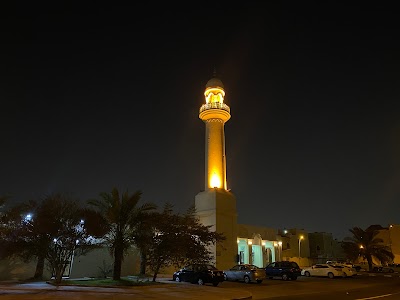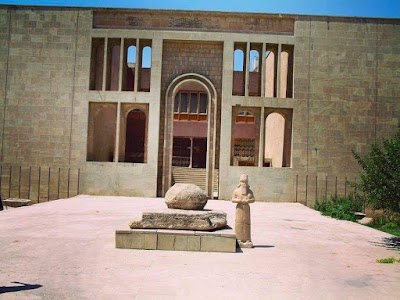Al-Qushla (القلعة)
Overview
Discovering Al-Qushla: A Jewel of Tikrit's History
Nestled in the historic city of Tikrit within Iraq's Saladin Governorate, Al-Qushla is a site brimming with cultural significance and historical allure. For foreign tourists, visiting Al-Qushla offers a fascinating window into Iraq's rich and intricate past, where narratives of governance, culture, and architectural beauty converge. This remarkable structure stands as a testament to the multifaceted history that has shaped the region over the centuries.
The term "Qushla" originates from the Ottoman word for military barracks, reflecting its roots during the Ottoman Empire's dominion over Iraq. Construction of Al-Qushla commenced in the mid-19th century, specifically around the 1860s, under the leadership of Midhat Pasha, a celebrated reformist. Originally designed as military barracks, the building later evolved to encompass government offices, transforming it into a vital hub for both administrative and military functions. The architectural style of Al-Qushla is quintessentially Ottoman, characterized by robust stone construction, soaring ceilings, and elegant arches that marry functionality with aesthetic appeal.
One of the most captivating features of Al-Qushla is its iconic clock tower, known locally as "Sa'at Al-Qushla." Added in the early 1900s, this towering structure quickly became a symbol of modernization and progress in the region. Even today, it serves as a focal point for visitors and photographers alike, embodying a harmonious blend of historical significance and enduring beauty.
Over the years, Al-Qushla has been a silent witness to myriad historical events and transitions. During the British Mandate in the early 20th century, it remained an essential administrative center, adapting to the shifting tides of Iraq's political landscape. Despite the challenges it has faced, Al-Qushla has demonstrated remarkable resilience, preserving the echoes of its storied past within its walls.
For tourists, exploring Al-Qushla offers much more than a simple tour of an old building; it provides an immersive experience into the eras of Ottoman and British influence in Iraq. Visitors can delve into various facets of history, from military strategies to governance and architectural evolution. The surrounding area, with its blend of the old city's charm and modern Tikrit's vibrancy, enriches the experience, serving as a microcosm of Iraq's broader historical journey.
Guided tours are available to help visitors navigate the extensive history and unique features of Al-Qushla. These tours often include engaging narratives that breathe life into the site's history, allowing visitors to fully appreciate the significance of the rooms and hallways they traverse. The caretakers of the site are typically multilingual, ensuring accessibility for a global audience.
Moreover, the cultural context surrounding Al-Qushla enhances the overall experience. Nearby, bustling traditional markets offer a sensory delight, filled with fresh produce and handcrafted items that complement the historical visit. Local cuisine, featuring mouthwatering dishes like kebabs and biryanis, provides a delectable conclusion to a day of exploration, inviting tourists to indulge in the flavors of the region.
Interesting facts further enrich the narrative of Al-Qushla. The building's design incorporates elements specifically intended to withstand the harsh weather conditions of the region. Thick walls provide insulation against the sweltering summer heat, while high ceilings facilitate better air circulation, reflecting the thoughtful design strategies of the era. The clock tower itself, often a focal point for photographs, boasts meticulously maintained mechanisms that symbolize the community's dedication to preserving their heritage.
In conclusion, Al-Qushla in Saladin, Iraq, is far more than an old military barrack; it stands as a vibrant historical monument playing an integral role in the region's narrative. For foreign tourists, it offers an educational and enriching journey into the heart of Iraq’s past, set against the backdrop of Ottoman and British architectural designs. As you wander through its halls, take a moment to absorb the stories each stone has to tell, and experience the living history that Al-Qushla proudly embodies.




